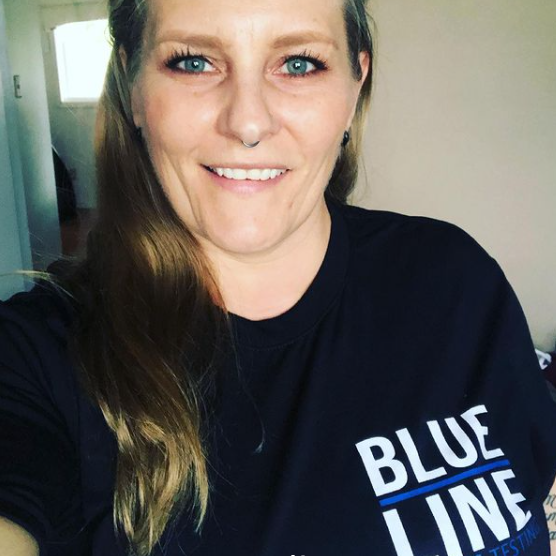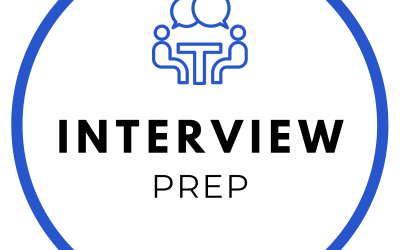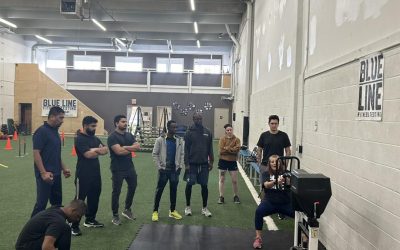Becoming a firefighter in Edmonton is an exciting and challenging career path, but before you can wear the uniform, you must prove that you have the physical ability to meet the demands of the job. The Edmonton Fire fitness test is designed to assess a candidate’s strength, endurance, and overall fitness level to ensure they are prepared for the rigorous duties of firefighting. If you’re looking to pass the Edmonton Fire fitness test, training with confidence at Blue Line Fitness Testing can help you train effectively and maximize your performance.
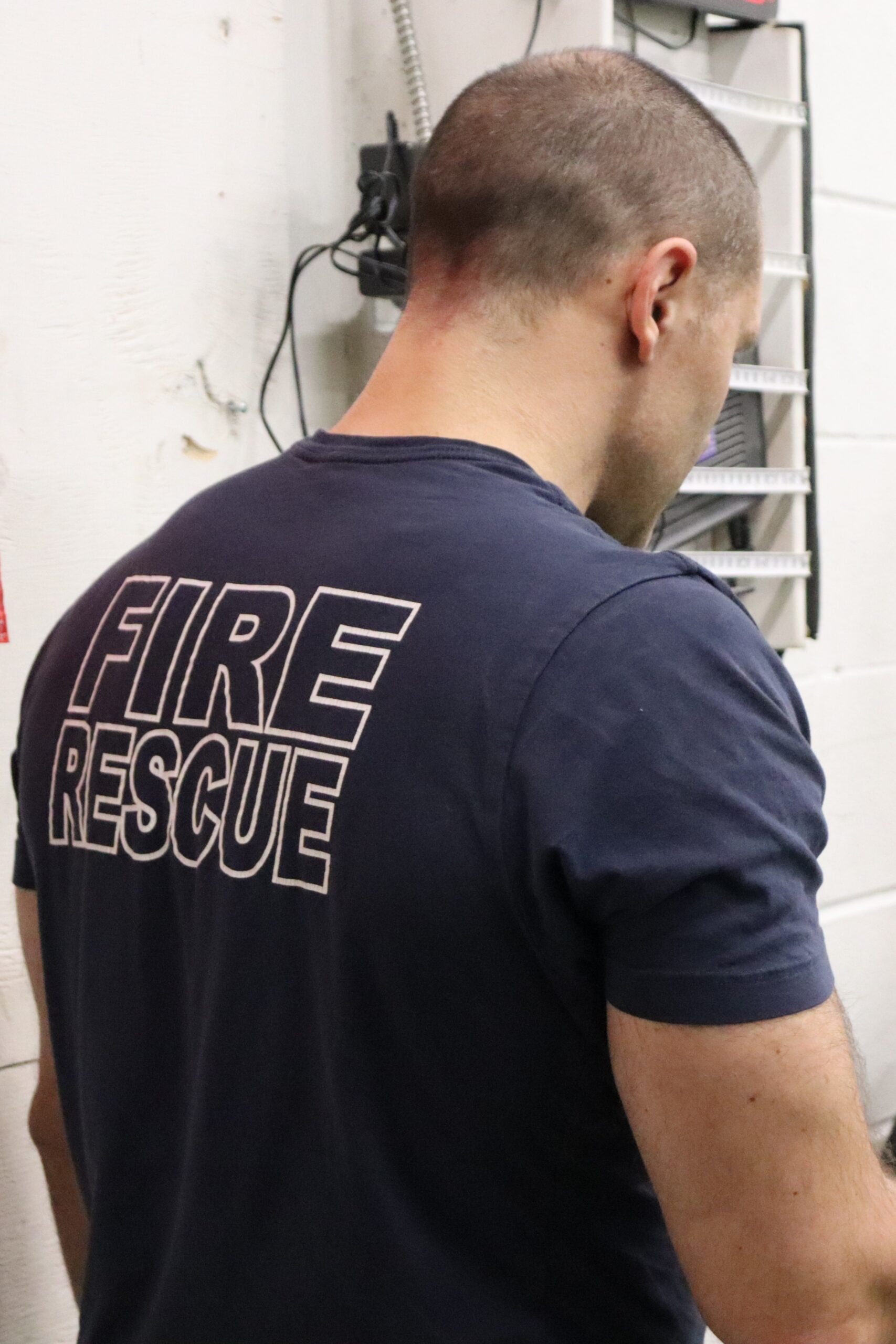
What Is the Edmonton Fire Fitness Test?
1. Equipment Carry (Rescue Tools Hold) – 3 MINUTE BREAKS BETWEEN STATIONS DURING TEST
DETAILS:
- This test involves picking up and carrying 2 pieces of extrication equipment. The first one is 20kg or 44 lbs and the second one is 36 kg or 80 lbs.
- The participant must carry each piece of equipment 15 meters while walking and not running. Next the participant will pick up the second tool and walk an additional 7.5 meters and set it down in front of a vehicle mock up.
- The participant will then hold the tool at a right angle at three different targets for 30 seconds each. The tool is set down between each hold and the participant stands fully upright between each hold.
- After this the participant must carry each tool back to the starting position.
- This evolution must be completed in 225 sec (3 min 45 sec).
PRO TIPS:
- Maintain an upright torso for walk/carry with good back and core bracing
- Practice good core bracing and body positioning for holds.
- Tool must remain at 90 degrees – no tipping front or back.
- Remember to breathe during holds, controlled exhalations – PURSED LIPS breathing is helpful
- Keep waist strap of SCBA tight to place SCBA weight on hips
- Roll knees out if back starts to round
- MOVE WITH PURPOSE- no running!

2. Charged Hose Advance
DETAILS:
Participants will start standing and facing forward for this test. They will then pick up a nozzle connected to 3 lengths of 44mm charged hose. The participant will advance this line 30m as quickly as possible WITHOUT running. Time starts when the participant moves to pick up the hose. The test must be completed in 27 seconds.
pro tips:
- Make sure your SCBA is properly tightened so that the weight is on your hips
- Pull the nozzle over shoulder so that it is at or below your waist and pull it across your body to the opposite hip from the shoulder
- Hold the hose with two hands
- Keep momentum and a steady pace – stopping makes the test much more difficult.
- Focus on knee drive and forceful steps to keep steady movement during the test.
- Also focus on forward torso lean IN LINE with hips. Don’t let the drag stand you up or hinge too much at the hips.
3. Weighted Sled Pull (Equipment Hoist)
DETAILS:
From a stationary position facing forward the participant will use their arms to pull a sled over a distance of 15 m using a 16 mm static rope. The test begins when the participant picks up the rope. This will be repeated three times with participants walking 15 meters in between reps to pull the sled back the other way. Participants can NOT run during the test. The test must be completed in less than 110 seconds.
PRO TIPS:
- Make sure your SCBA is properly tightened so that the weight is on your hips
- Keep feet securely in place and drop hips to a comfortable STRONG position. A slightly staggered stance may be beneficial.
- It is recommended to use an overhand grip
- Some participants may need to involve more hip drive to generate enough force for the pull
- Use a “pull through” technique to control rope slack and avoid excessive side to side motions
- Smooth is fast, keep pulls smooth and try to not generate too much slack with each pull as the sled will stop with each pull. Keeping it moving will make it easier.
- Entire length of sled must cross the mark/line
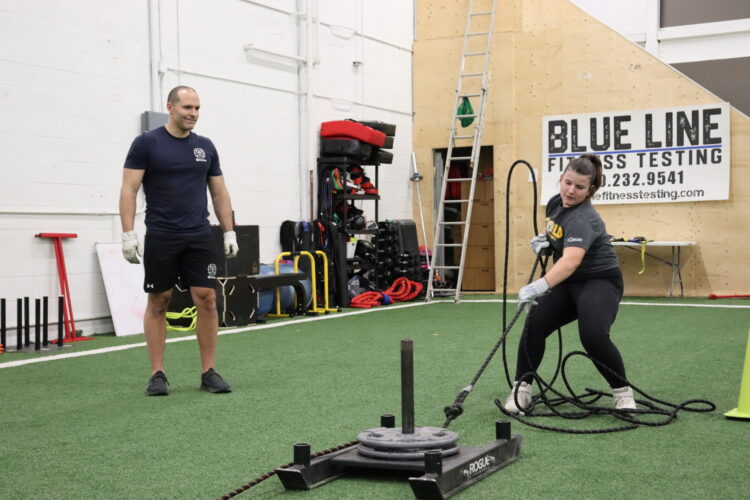
4. Forcible Entry (Sledge Hammer)
DETAILS:
Using a 10lb hammer the participants will strike a mechanically braked target until a buzzer signals the end of the test. The test begins once the participant picks up the hammer which will be standing upright in front of the apparatus. The test must be completed in 19 seconds
pro tips:
- Make sure your SCBA is properly tightened so that the weight is on your hips AND make sure shoulder straps are tight so the tank does not swing side to side.
- “Average” participant will take 10-15 hits to complete the test.
- Get a comfortable stable stance. Usually slightly more than shoulder width with a slight stagger to the feet.
- Grip the hammer as hard as you can and think about following through the striking surface. If the hammer twists in your hands you are losing lots of power.
- Accuracy and follow through are very important. Pick a consistent spot to hit on the tire/target.
- Think about moving the hammer head FAST through the plate.
- Power comes from hip drive – Exhale on the hit/grunt to ensure you are breathing
- Time starts as soon as you grab the hammer.
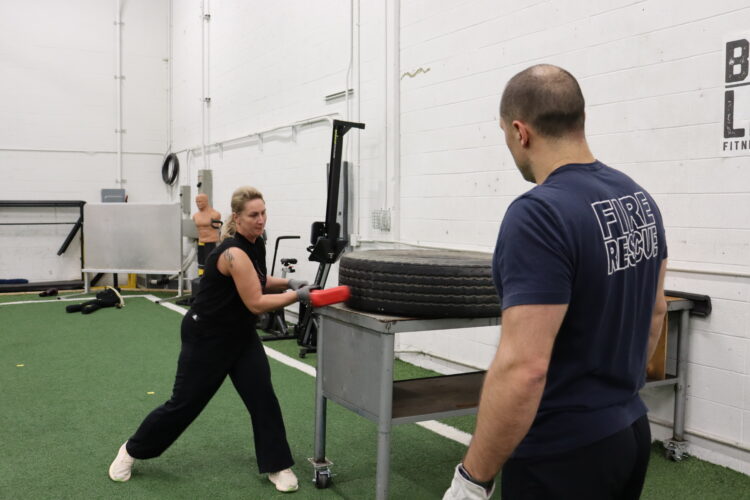
5. Victim Rescue (Dummy Drag)
DETAILS:
Participants will start from an upright position at the head of the dummy. The head of the dummy lines up with the starting pylon. They will then bend over to grasp a rescue harness and pull the rescue dummy backwards through a serpentine course. The total distance is 30 meters, 15m one way with 4 pylons each way to move around. The test finishes when the dummy’s feet fully crossed the starting pylon.
pro tips:
- Make sure your SCBA is properly tightened so that the weight is on your hips
- Grip harness in a way that allows an upright torso and backwards lean.
- Any dummy weight resting on thighs will drastically slow down the test.
- Dragging weight backwards is much more challenging than you think, make sure to practice backward sled drags!
- Try to keep a tight and upright back with shoulders back as well. Don’t let the dummy bend you over too far at the hips. This will slow down the test and make it hard to breathe.
- Think about fast steps, no long steps, push off your toes and no bouncy steps
- Remember to control your breathing
- Your helmet will be on which may limit visibility!
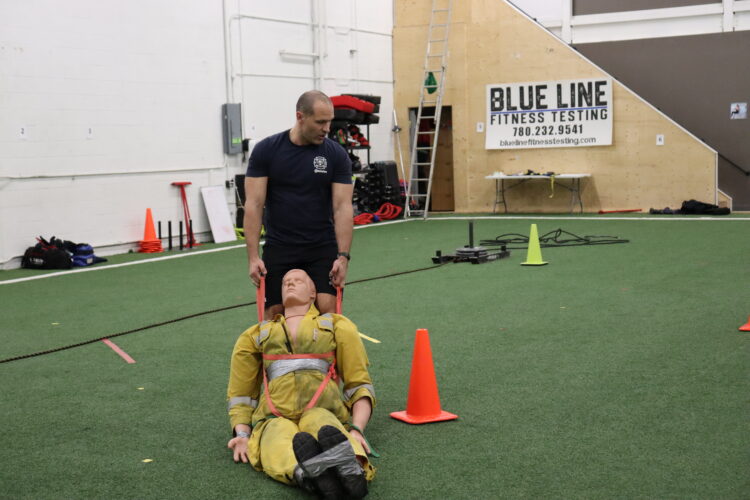
6. Ladder Climb
DETAILS:
Participants start facing a ladder and must climb 10 rungs (3.45 m) up and down a ladder 5 times. Each round starts with both feet on the floor at the base of the ladder and BOTH feet must be placed on the 10th rung before the participant can return down the ladder. Time starts when the participant moves to climb the ladder. Three points of contact must be made with the ladder at all times and participants cannot miss any rungs. The test must be completed in 97 seconds.
pro tips:
- BOTH feet must touch each transition point at top and bottom!
- This obstacle surprises some participants because legs are very tired from previous tests, especially backwards drags.
- Keep a steady pace throughout the test, don’t start too fast.
- Maintain 3 points of contact with the ladder at all times!!!!!!!
- Focus on steady regular breathing – not fast chest breaths
- Time is tight on this station – need to move fast.
- Hands must be on the rungs, not the sides of the ladder

vo2 max test
VO₂ max is used to measure cardiovascular fitness. It measures the maximum rate of oxygen you are able to use during exercise. It measures the maximum millilitres of oxygen consumed in one minute / body weight in kilograms. After a 5-minute warm-up, you will walk at a speed of 3.5 mph and 10% grade for 8 minutes. This is called the constant work rate phase. Once the constant work phase is complete, you have reached the minimum cut-score of 13 minutes, next you will immediately progress to the incremental phase. During the incremental phase the treadmill speed remains at
3.5 mph but the grade increases 1% every minute to a maximum of 15%. Subsequently, the speed will increase by
0.5 mph each minute while the grade remains at 15% until you can no longer continue. The duration of this test depends on your fitness level and motivation but you must safely reach the minimum cut-score of 13 minutes to pass. Generally, the longer the duration of the test, the better the VO2peak score is, so a full and complete effort is required to accurately measure this aspect of fitness. There is also a mandatory 5-min cool-down (slow walk on a flat treadmill). In order to pass the treadmill test, you MUST complete the 5-min warm-up, the 8-min constant work rate phase and the 5-minute cool-down (for a total of at least 13 + 5 minutes).
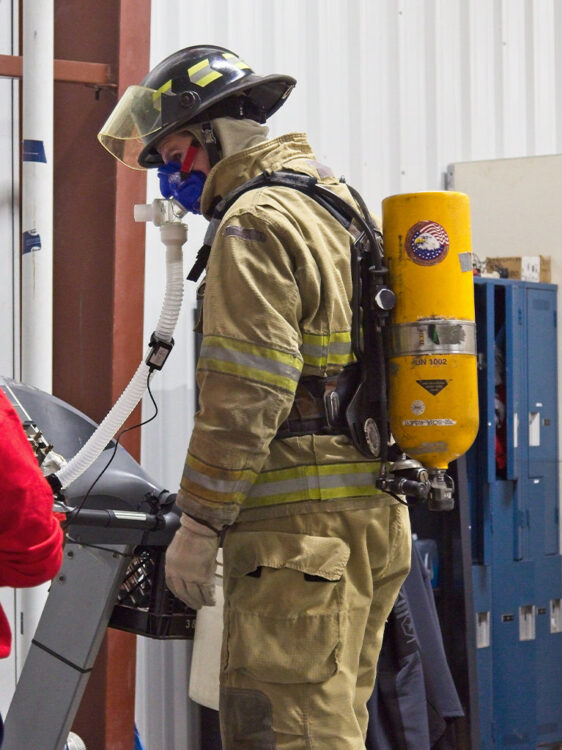
How Blue Line Fitness Testing Can Help You Pass
At Blue Line Fitness Testing, we specialize in preparing individuals for physically demanding law enforcement and first responder tests, including the Edmonton Fire fitness test. Our expert trainers provide structured training programs to help you build strength, endurance, and functional fitness for the test.
Key Training Areas We Focus On:
- Cardiovascular Endurance
- High-intensity interval training (HIIT) for improved stamina
- Rowing, stair climbing, and sprints to mimic test conditions
- Functional Strength Training
- Weighted carries and sled drags to simulate real firefighting tasks
- Resistance training to build upper and lower body strength
- Core and Grip Strength
- Farmer’s carries and rope pulls to improve grip endurance
- Core stability exercises to enhance balance and injury prevention
- Agility and Mobility
- Obstacle course drills to improve speed and maneuverability
- Flexibility training to reduce risk of injury
- Mental Preparation
- Strategies to manage fatigue and stress during testing
- Breathing techniques to maintain control under physical exertion
Start Your Firefighter Fitness Training Today
Passing the Edmonton Fire fitness test is possible with the right training and preparation. At Blue Line Fitness Testing, we offer personalized training plans and group fitness sessions tailored to help you succeed. Whether you’re just starting your journey or need to refine your skills, our team is here to support you every step of the way.
Are you ready to take your firefighter fitness training to the next level? Contact Blue Line Fitness Testing today to book your assessment and get started on your path to success or join our 6 week Fit for Fire classes now to get started working on your fitness for upcoming hiring phases.

